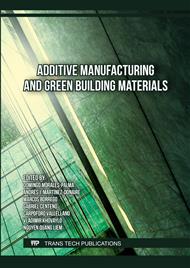p.71
p.81
p.91
p.99
p.107
p.117
p.127
p.135
p.143
Experimental Study οn the Infill Density Effect on Reduced Compressive Mechanical Properties οf Additively Manufactured ASA
Abstract:
Additive manufacturing is considered an important alternative way for the fabrication of high quality polymer parts for various applications. Especially, Acrylonitrile styrene acrylate (ASA) is a promising thermoplastic polymer, exhibiting favorable mechanical properties and is also resistant to environmental conditions and various chemical substances. Given that it is possible to process this material through Fused Filament Fabrication (FFF) technology, it is required that optimal conditions are determined based on various criteria. Especially, as manufactured parts are expected to withstand various types of loads, the fabrication process should ensure adequate mechanical behavior under different conditions. For that reason, it is important both to determine the appropriate printing settings and investigate the mechanical behavior of additively manufactured ASA parts. In the present study, compression tests are conducted and statistical analysis is performed on the obtained results, in order to determine the mechanical properties of ASA parts with different infill densities for two different infill patterns. The results indicated that the reduced mechanical properties, in respect to the infill density are inversely correlated with the infill density and that honeycomb infill pattern is superior to gyroid in every case for the same infill density.
Info:
Periodical:
Pages:
107-115
Citation:
Online since:
September 2023
Price:
Сopyright:
© 2023 Trans Tech Publications Ltd. All Rights Reserved
Share:
Citation:



